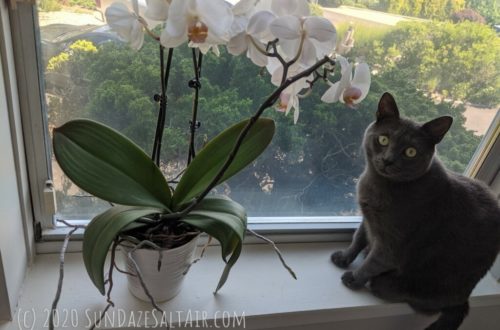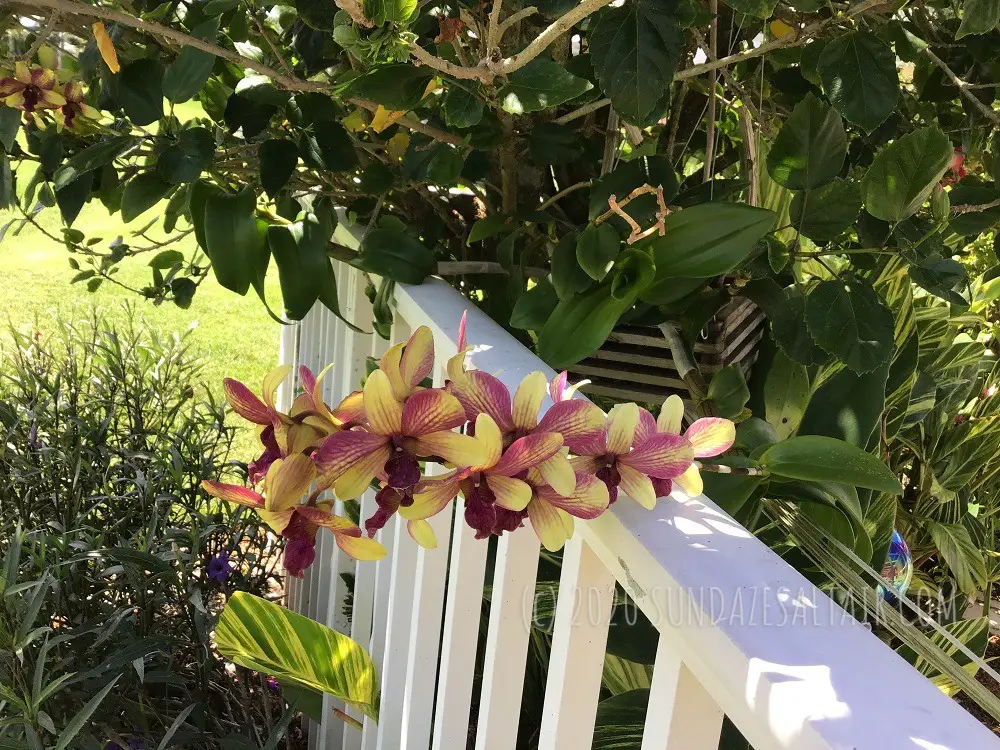
Why Has My Orchid Suddenly Changed Color? The Mystery Of Color Changing Orchids
Why Did My Purple Orchid Suddenly Turn Yellow? When Your Orchid Starts Blooming In A Different Color (With Pictures)
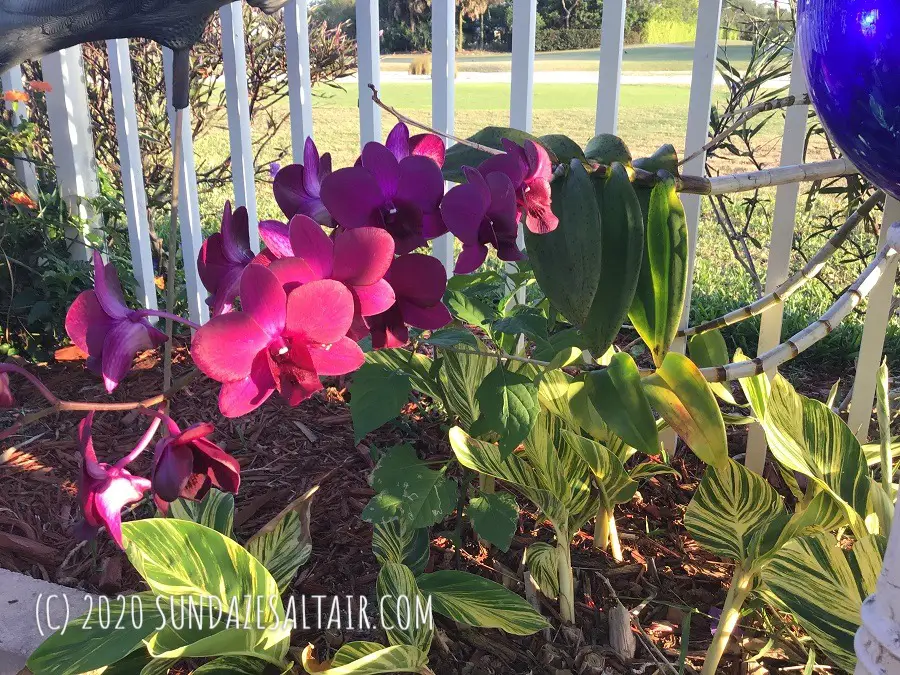
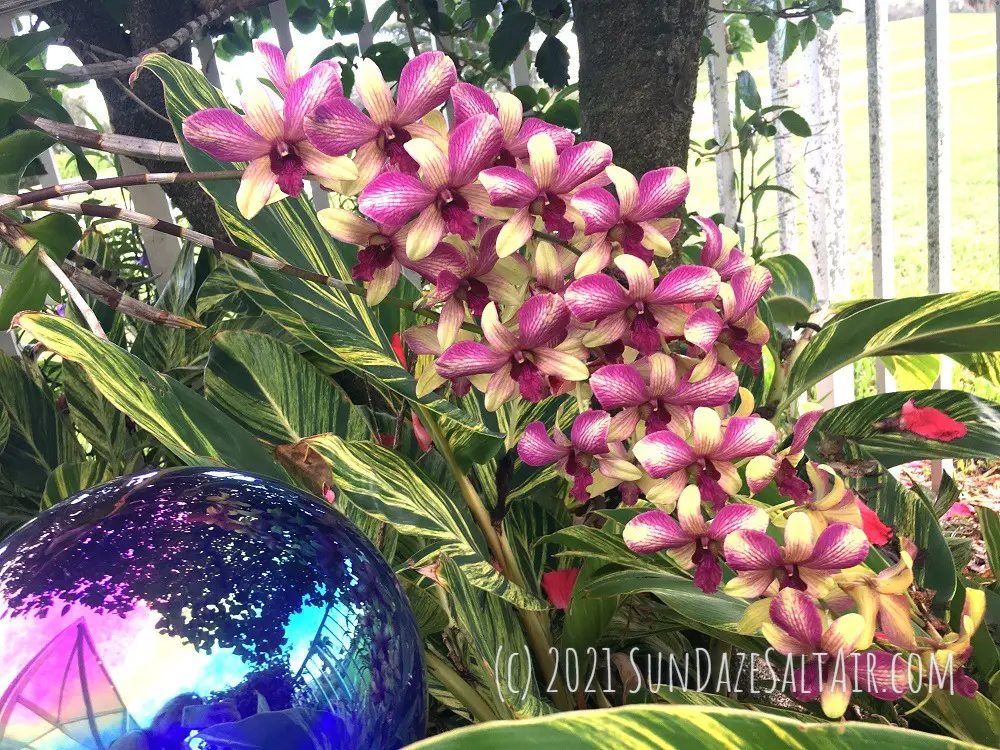
A Color Cornucopia of Orchids
There are a couple of times throughout the year when an innocent walk through a garden center at the local home improvement store, Walmart, or even grocery store, becomes an exercise in self-restraint and willpower -- for me, that time is orchid season.
When fresh orchids are delivered and prominently displayed in garden centers everywhere, it can feel like walking through an art museum - or a gauntlet designed to test the willpower - impossible to just pass by without stopping, gawking at, and sometimes, buying one of these all natural "works of art." Dendrobiums and phalaenopsises of every color jockey for attention, hanging out suspended in the open air, flowing from baskets, or stunningly mounted to driftwood... The variety is endless and striking. And of course, one of the most striking aspects of this variety is the endless spectrum of beautiful colors and patterns found on orchid flowers.
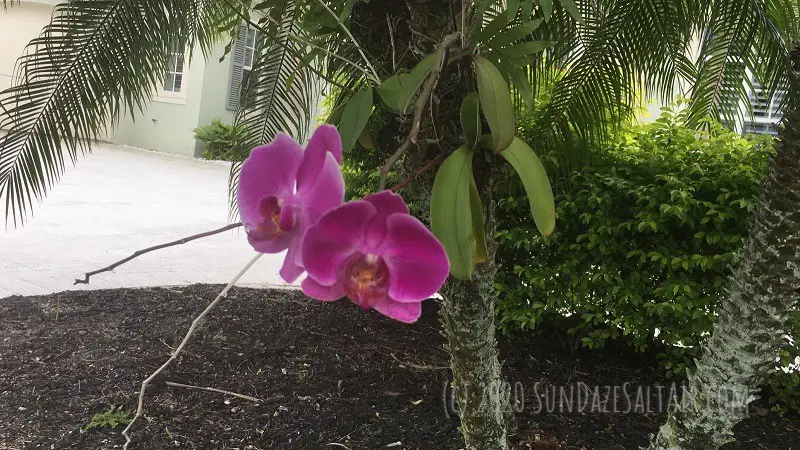
Tempted by this eye-catching display of color and beauty, it is hard not to succumb and take one home... "That bright magenta would round out the collection," you think... or "how about a rich, regal purple one..?" Yes, the struggle is real, the will is weak, and the wallet is empty... But at least you have now completed your orchid collection by adding that one tantalizing color you were missing to round out your orchid family. All goes well the first few months as you enjoy your new orchid's vibrantly colored flowers and, when they die and drop off, you eagerly look forward to the next blooming cycle...
Why Is My Purple Orchid No Longer Purple?
Following the initial bloom, new buds begin to form a few months later and you excitedly anticipate their opening... only to discover that somehow - seemingly inexplicably - the newest buds on the bloom spike bear little resemblance to the orchid plant you originally brought home... In my case, where I once had bright royal purple flowers, pale yellow ones with a faint purple splatter-like pattern or veining have all taken their place... begging the question, "What happened to my purple orchid...?"
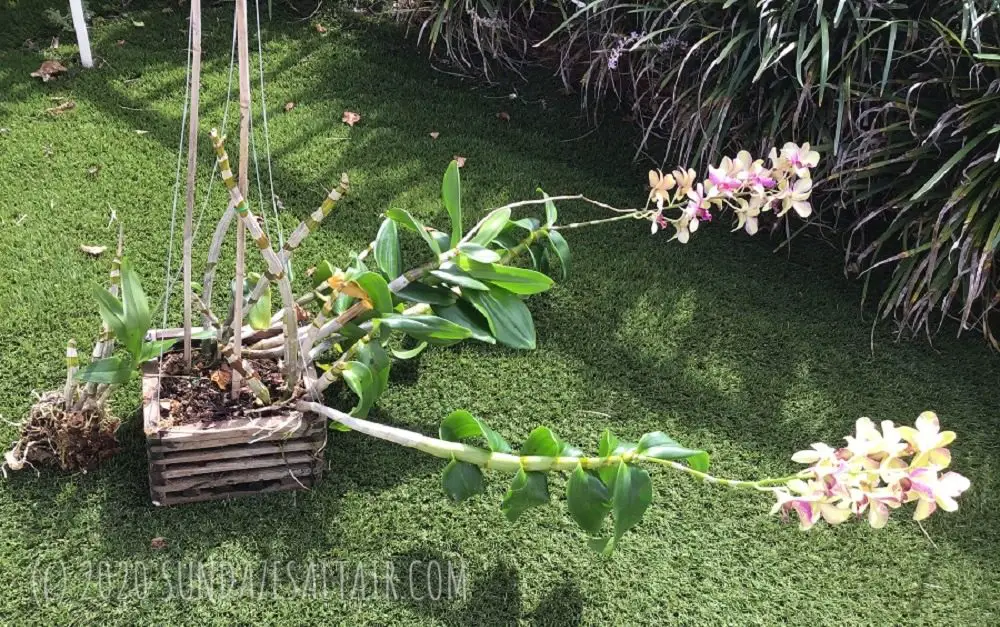
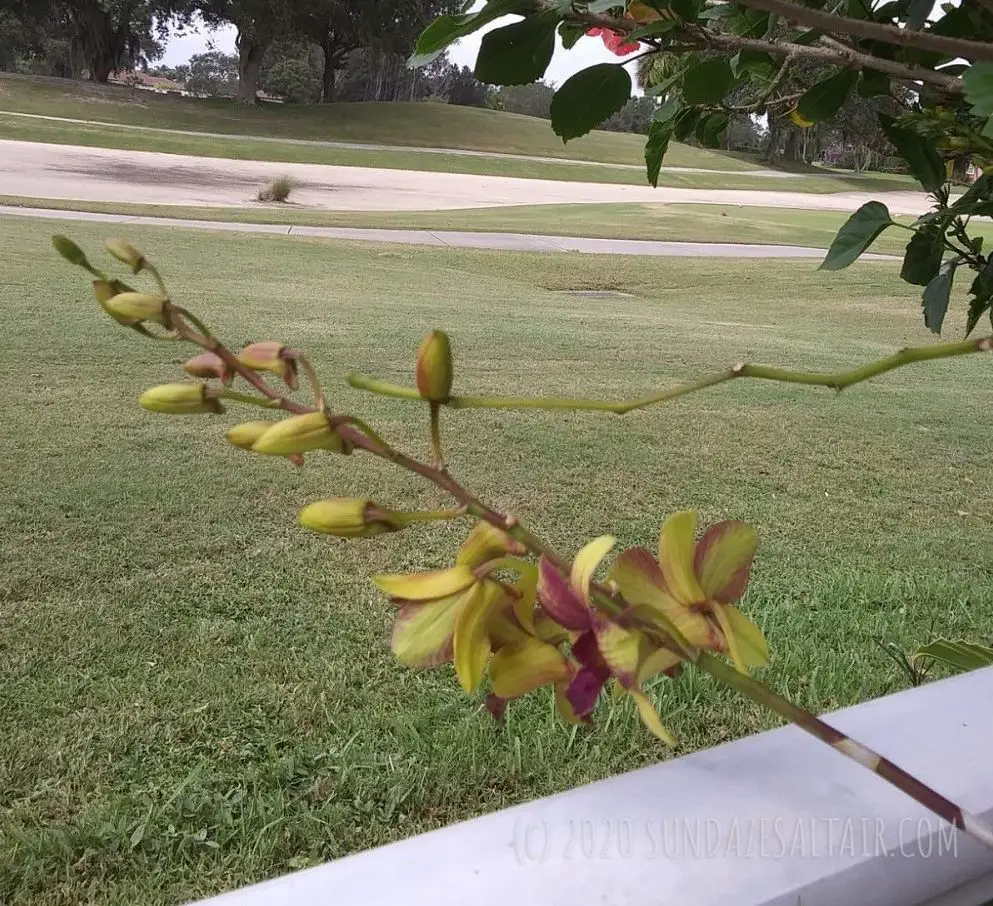
In order to find an answer to this peculiarity, I have heard a variety of explanations and interesting observations on this phenomenon. All the conversation has led me to one conclusion - even if what you see is not always what you get with orchids, whatever the end result is will still be exquisite-- as only an orchid can be...
**Note: This post contains affiliate links for which a small commission may be earned if you decide to make a purchase through a link.
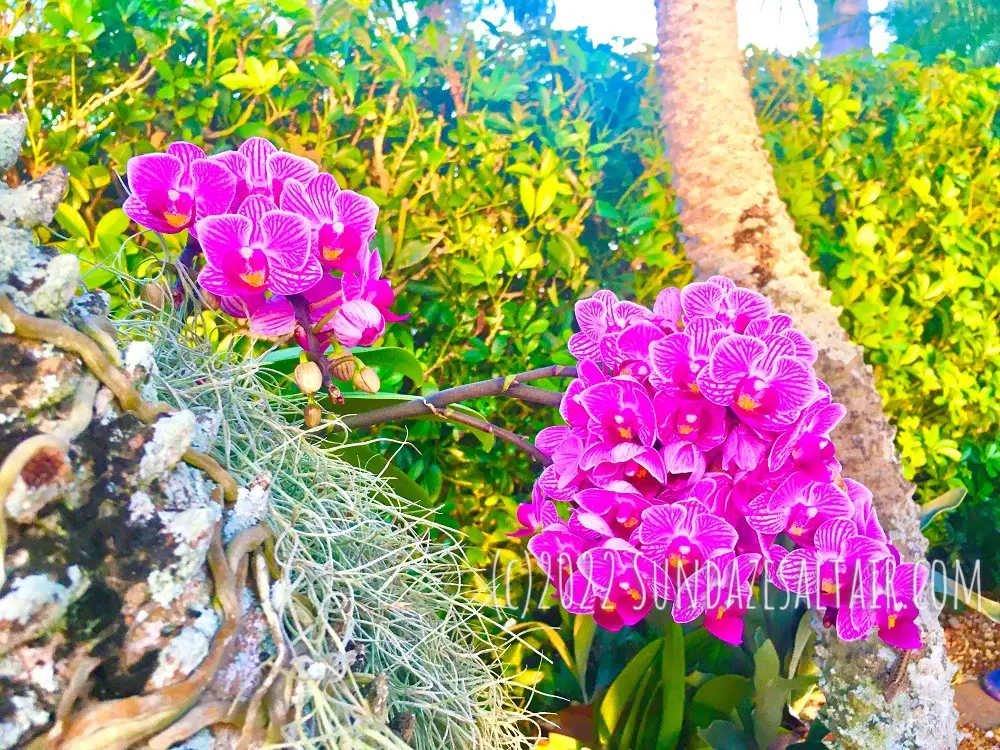
Orchid Diversity
Orchids are one of the most diverse and widespread species of plants. Comprising the second largest family of flowering plants in the world, the orchid or Orchidaceae includes between 25,000 to 30,000 different species that make up this diverse family of flowering perennials. Members are found on all continents of the world except for -- not surprisingly -- Antarctica. Of these varieties, about 10,000 are native to the tropics. These prolific numbers do not even include the approximate 100,000 hybridized or cultivated orchids typically bred and sold by commercial orchid growers.
Genetic Pressure & Competitive Environments Produce the Orchid's One-Of-A-Kind Striking Beauty
The diversity of the orchid family is reflected in the rainbow of colors in which they are found, ranging from the crispest snow white to the deepest purple that almost borders on black, plus every hue and striation pattern in between. Much of this sheer variety is due to orchids' origins in highly competitive growing environments like the tropics, where orchids have to compete with other plants to attract more pollinators. The end result is the vibrant, show-stopping colors that have become synonymous with orchids, and even some very unusual fragrances...
Speaking of Orchid Diversity... An Orchid that Smells Like Coconut Cream Pie...?
This striking, easy to grow and prolific orchid is not just a thing of beauty, but it gives off a scent that resembles that of a delicious coconut cream pie... Compact and perfect for growing on a windowsill this orchid stands out in both looks and in its unique scent....

Purple, Violet & Blue Orchids
Despite lending its calming hue to sky, sea, and part of the rainbow, blue is actually quite a rare color in nature, with only 10% of the over 200,000 species of flowering plants producing a natural blue pigment....
Among the many eye-catching colors they display, orchids can and do come in a variety of majestic purple shades. Some orchids, however, come in the rare blue-purple hue. The vanda orchid, for example, can be found in bright lavender shades with cool blue undertones, a relatively rare display of cool blue in the flowering plant world. Cattleya orchids come in a variety of sizes and colors and also frequently display blooms from the palest lavender to a deep magenta or rich violet. Also, dendrobiums with their long arching stems and the phalaenopsis, also known as the moth orchid and a favorite for growing at home, both come in abundant color options that include an eye-pleasing array of purple hues.
However, despite this rainbow of colors, there is evidence that cool-toned violet or purple-blue orchids are less bred than those of other colors, and that red-purple orchid flowers are much more common. Despite lending its calming hue to sky, sea, and part of the rainbow, blue is actually quite a rare color in nature, with only 10% of the over 200,000 species of flowering plants producing a natural blue pigment.
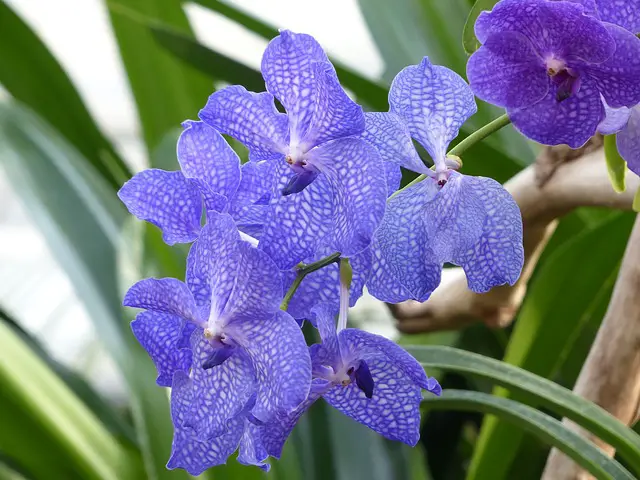
What Factors, If Any, Could Cause an Orchid to Change Its Color?
Now, whatever color your orchid, orchids generally retain the same color throughout their blooming cycle, however, even within the same blooming cycle, I have heard anecdotally that color changes have been observed. I have not witnessed this myself, but it has been reported, and according to Sciencing.com, at the tail end of the orchid blooming cycle, right as the flowers begin to dry up and just before they wither and fall, flowers have been observed to deepen in color - reportedly so much so as to transform from white to pink, with veining becoming more prominent during this curious color transformation. Is something in the environment triggering the expression of a previously dormant gene? Thus far, there is little conclusive information available to explain this curious phenomenon beyond the observations.
Obviously, the scenario described above is quite in contrast to the case of my orchid, in which the color change not only occurred at the start of a brand-new blooming cycle but, instead of deepening in color and tone, my orchid did the exact opposite - fading from a beautiful, dark, yet bright purple to a pale, springtime yellow with streaks of purple.
In case anyone is wondering, my orchid has been in my care and "custody" the whole time, so I know there is no chance of a "bait and switch." In terms of the plant's overall health, my orchid is very healthy, expanding in size as it grows new canes. Plus, its growing conditions, under a hibiscus tree in the yard, provide everything the orchid needs in terms of ideal lighting and water. There are no visible yellow leaves, nor are there any other signs of distress.
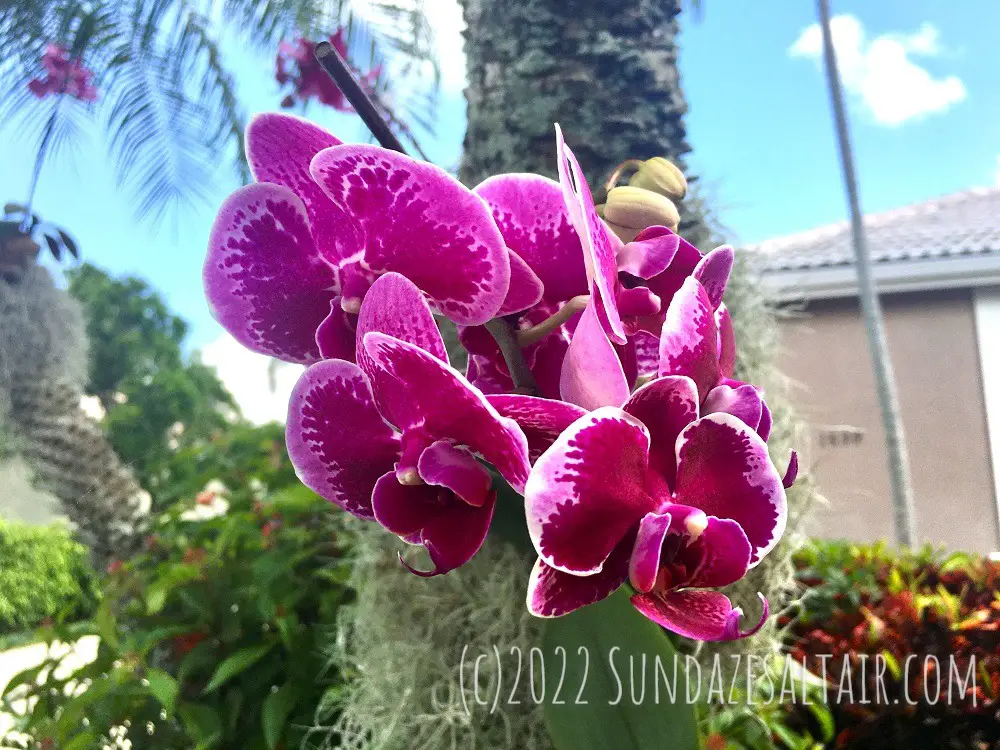
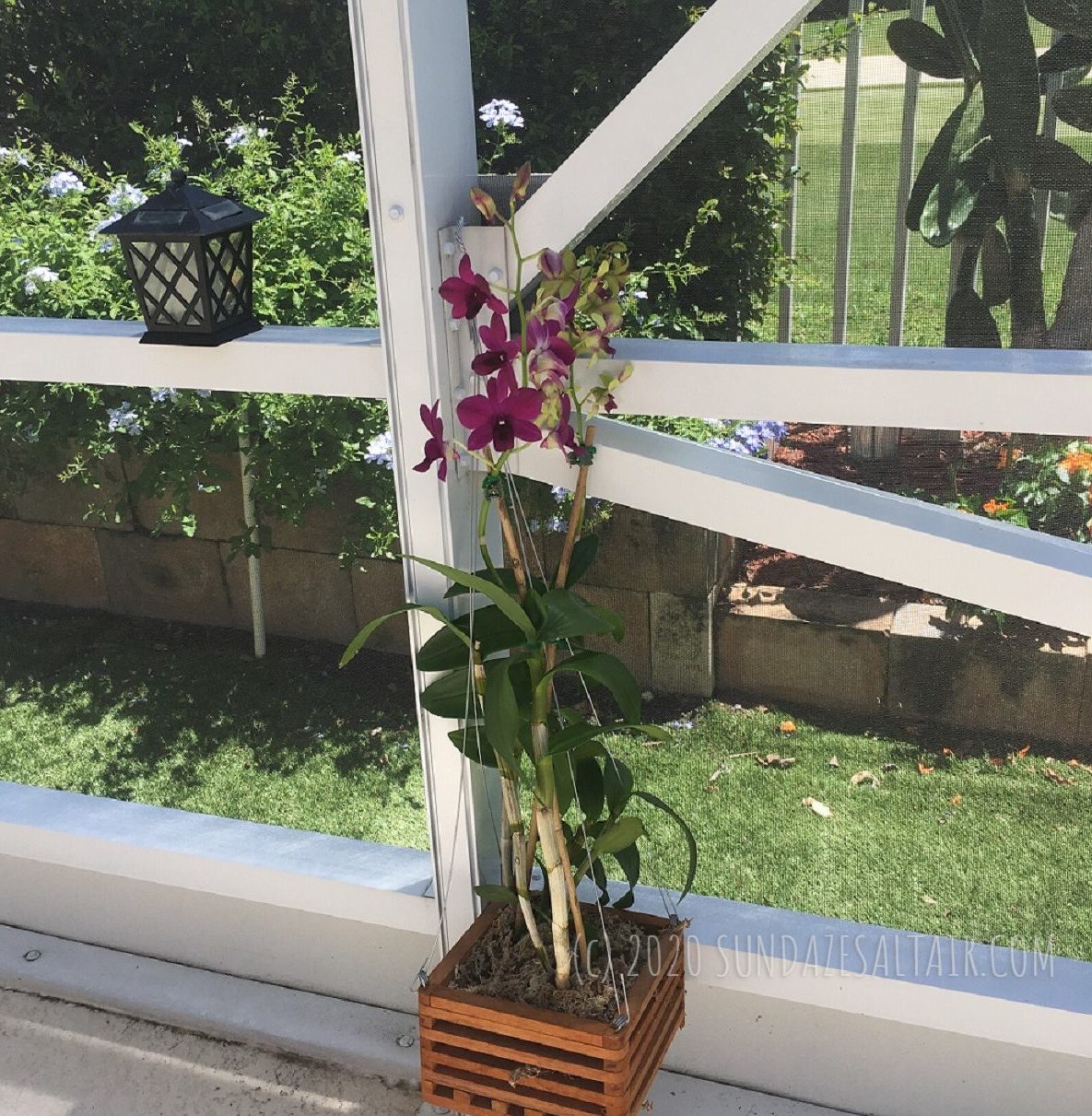
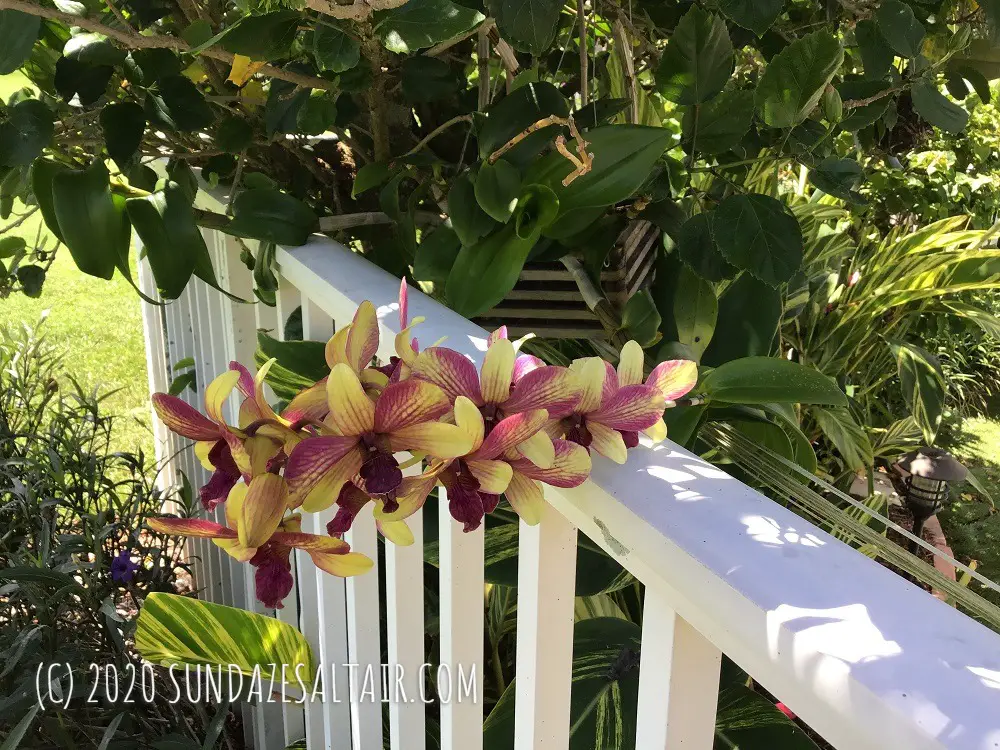
Can A Change in Growing Conditions Produce an Orchid Color Change?
I had heard it suggested that any changes in color may perhaps be the result of differences in light and temperature between the environment in which the orchid was initially raised and its new environment. The theory is that lower light or slightly cooler conditions, such as those in an indoor environment, may result in deeper color saturation of orchid blooms.
In the case of my outdoor tropical orchid, however, it was not subject to any cool, dim indoor conditions. Instead, my orchid receives moderate light and moisture under a shady southern hibiscus tree. These conditions probably very closely simulate the growing conditions in which it was raised on a tropical orchid farm. So again, another theory that was not likely, at least in the case of my dendrobium.
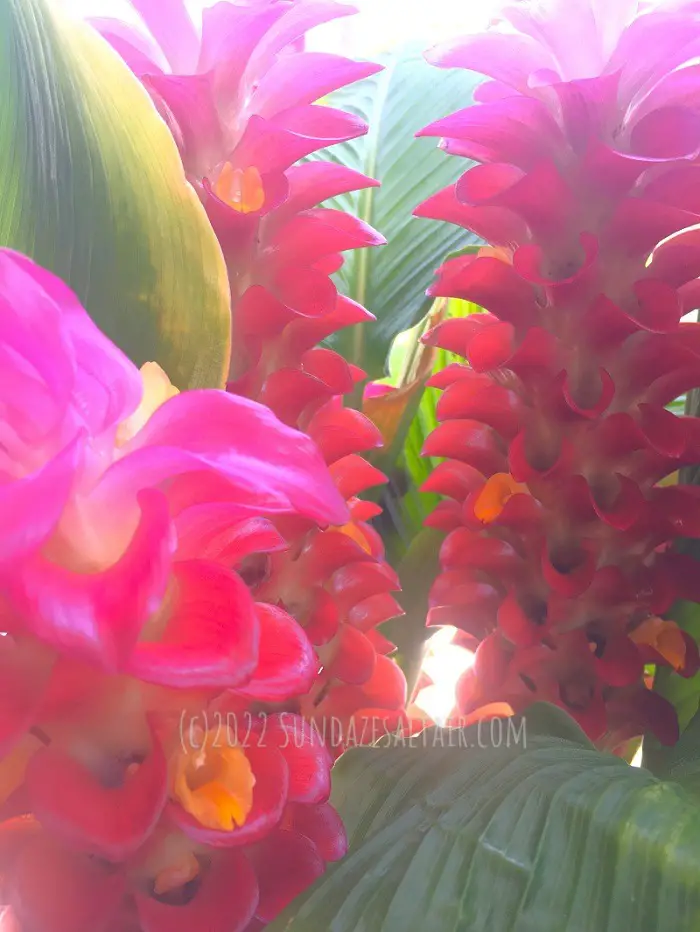
Does A Change in Potting Mix or the Addition of Fertilizer Cause an Orchid to Change Colors?
Other instances of color changing orchid transformations have been attributed to a change from one type of potting mix to another, or to the addition of a colored fertilizer. It is claimed that a change in potting mix composition and nutrients can alter an orchid's color. In these claimed cases, the cited change usually refers to a transformation from a vibrant shade to a paler shade under such altered conditions. In the case of my orchid, none of these changes occurred as I did not alter the potting medium nor did I add any kind of fertilizer, bringing us back to square one of the orchid color changing mystery.
Did I Unknowingly Purchase A "Color Enhanced" Orchid?
Another suggested possible explanation for the color change is that the purple orchid I purchased it was actually a "color enhanced" orchid, or a purple-dyed white or yellow orchid. Yes, this is actually a thing apparently, but I am not sure that it is very common. They originally came primarily in blue, but are now available in other unusual colors, including purple and even green, if you can believe. To create a color-enhanced orchid, it is claimed that colored dye is injected into a white or yellow orchid which is then absorbed by each bloom on the spike. This supposedly gives the appearance of an all-natural purple orchid, at least until the following blooming cycle when the dye dissipates, and the flowers eventually return to their natural white or yellow color.
Buyer Beware?
So, essentially you may be buying a white or yellow orchid disguised as a purple one...? Sounds far-fetched... Is this really common? I have heard of it, at least anecdotally, but I would love if a reader would comment if they have encountered anything like this.
And in case I am to blame for misreading labels or tags, I went back to my saved orchid tags to read the fine print in case I missed anything. Between care and potting instructions, and "not for human or animal consumption" warnings, nowhere is there any indication the orchid was an artificially-dyed one-- a yellow orchid masquerading as a purple one.
Conclusion: Color Changing Orchids, Enjoy What You Have & Expect That Not Everything Is as It First Appears
Now, again, I don't have any proof as to what caused the orchid's color change and whether it is actually a "color enhanced" orchid that I purchased or just the result of some bizarre genetic mutation that suddenly appeared or some other strange quirk. I may never know. Either way, I will enjoy the delicate yellow and purple streaked orchid I have in all its glory. After all, I'm sure you would agree that each orchid in your collection has its own uniqueness-- not just in color, but in markings and shape, that adds up to a one-of-a-kind individual beauty all its own.
Has anyone else had any similar color transformations with their orchids? Please share your experience by commenting down below.



You May Also Like
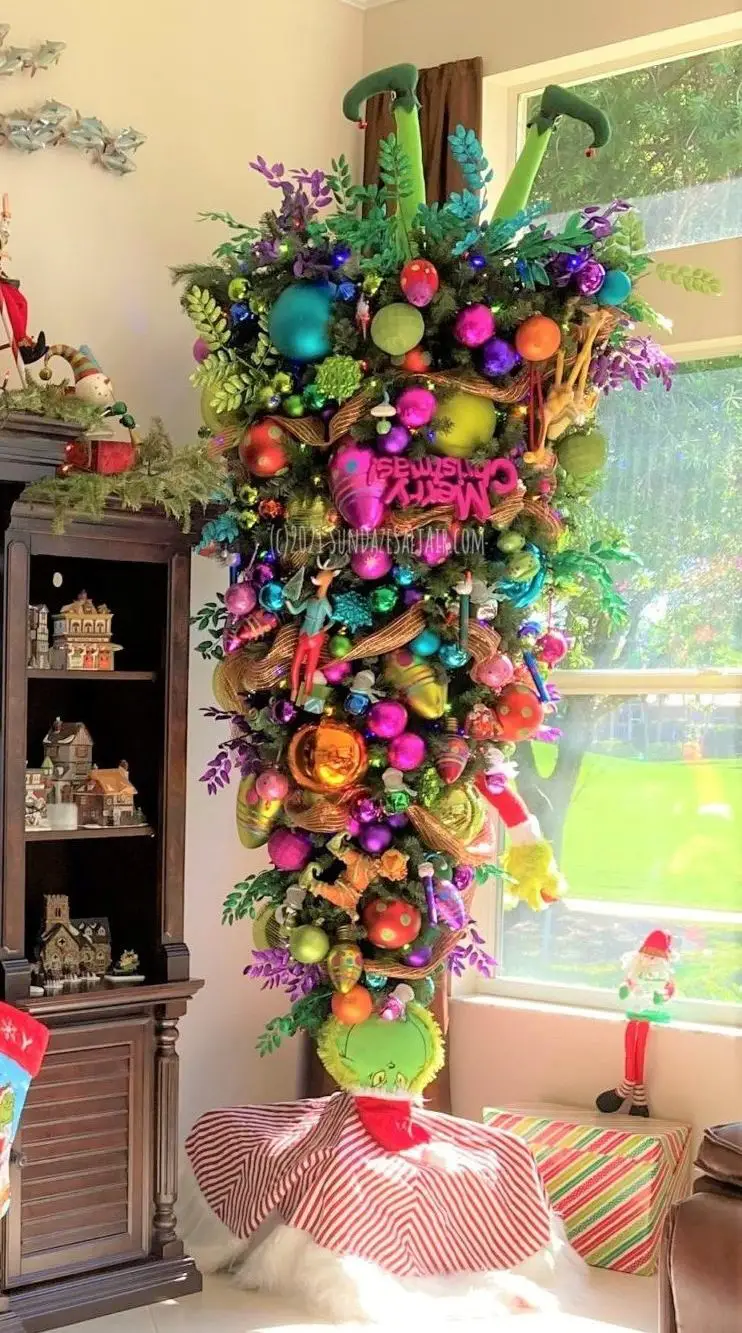
Unique Christmas Gift Ideas 2021: Inspiration For Last Minute Shoppers
December 15, 2021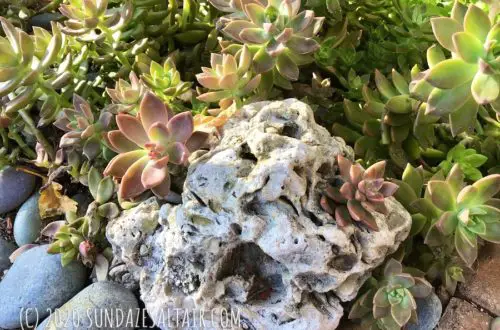
How To Grow Succulents On Rocks For A Unique, One-Of-A-Kind Garden
April 8, 2021